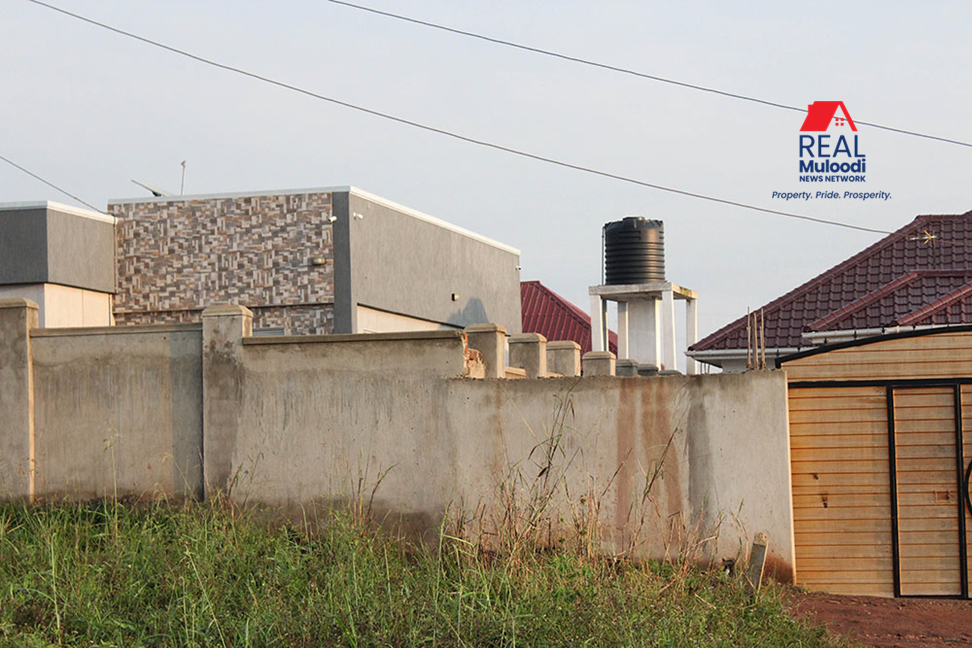UGANDA, Kampala | Real Muloodi News | Shared walls also known as boundary walls between neighbouring properties can often become a source of disputes and conflicts.
To minimise such issues, it is crucial to follow certain guidelines and considerations when constructing and sharing walls.
This article explores real-life scenarios and provides insights from construction professionals to help homeowners navigate these challenges effectively.
Harriet Nakayiza’s Predicament
Harriet Nakayiza of Bweyogerere purchased four acres of land in 1943 and built her residential home. Over time, she sold a portion of her land to Hajji Kayongo, who constructed his home adjacent to Nakayiza’s and erected a wall around it.
Nakayiza subsequently built a vertical wall, using Kayongo’s fence as her own. Initially, the neighbours coexisted harmoniously.
However, when it rained, water would flow into Kayongo’s compound due to blockages on both sides. Nakayiza became distressed as Kayongo’s family frequently accessed her compound to monitor water levels.
She lamented the lack of privacy and feared the weakened wall might cause significant trouble.
Musisi Kepha’s Ordeal
In 2013, Musisi Kepha’s family obtained a bank loan to develop their family estate in Wakiso Kassengejje, as encroachments were becoming prevalent.
However, their troubles began when a neighbouring building, sharing a wall with theirs, was expanded beyond its original structure.
The inadequate foundation of the building caused it to lean towards the Musisi family’s bungalow, which had a perimeter wall on its sides.
After alerting the Wakiso District authorities, tenants and neighbours were ordered to vacate the building for its demolition.
The Musisis, once proud homeowners, now live in an exposed facility, feeling insecure and vulnerable.
Disputes regarding boundary walls in residential and commercial areas are commonplace. Issues arise when property owners disagree on the location of the boundary, when trees or plants encroach on neighbouring properties, when walls pose a threat to adjacent lands or people, or when they alter the natural flow of water.
Isaac Twebaze, a civil/structural engineer at Seka Associates Consulting Engineers Limited, advises that if one chooses to construct a wall or fence along the boundary line, it should be on their property.
In shared cases, ownership and responsibility should be clearly defined in legal agreements.
Luke Oluka, a construction engineer with Elpax Engineering Limited, cautions against sharing walls for selfish reasons.
He suggests involving a physical planner and drafting agreements that outline how the shared wall will be maintained.
Witnesses should also sign these documents for future reference, particularly in cases of property transfer or disputes arising from one party’s demise.
Jethro Okubal from Etyang Property Consultants Limited highlights privacy concerns and potential risks in the event of a fire. Shared walls can compromise both security and privacy, as well as hinder independent expansion plans for each property.
Civil engineer Eria Kibulwe emphasises that sharing walls goes against engineering principles. Each building should be independent, allowing sufficient space for potential future expansion.
Engaging unprofessional builders may result in unstable walls that pose dangers to neighbours, especially during demolition or structural collapse.
Kibulwe stresses the unpredictability and potential hazards associated with relying on another building’s foundation strength.
READ MORE LIKE THIS:
Land Dispute: Dangers of Not Having a Formal Road Agreement with Your Neighbour
Where Should I Live? 7 Factors to Consider When Choosing a New Neighbourhood



